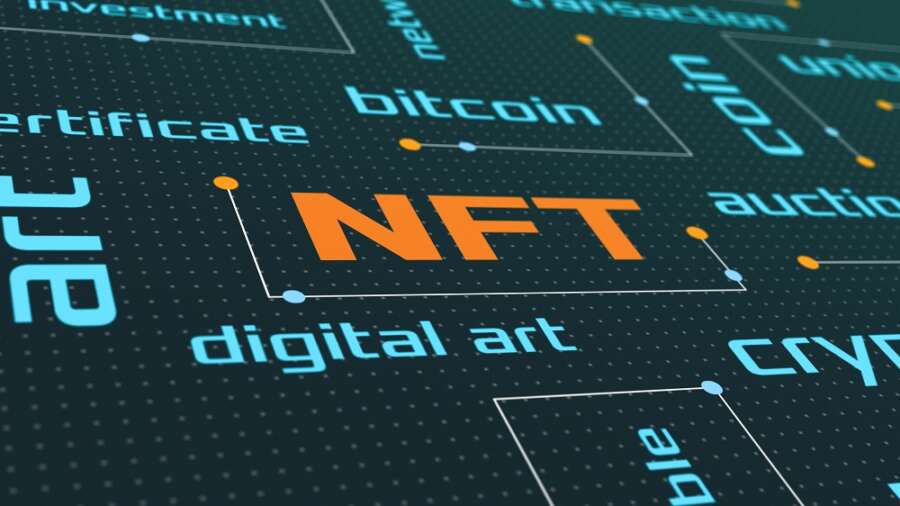By: Anya Zakharova, Managing Director of Stella International Art Foundation
To say that the past two years have been a tumultuous period for the art sector would be an understatement. With galleries forced to close their doors, international art fairs cancelled and in-person auctions indefinitely postponed, the art market faced an extremely challenging scenario.
As with every other sector, the art world’s plans for digital innovation were significantly accelerated. Art fairs, live auctions and prestigious exhibitions across the globe had to quickly pivot their operations online and equally, collectors had to embrace online-only sales. The latest development in this enforced digitization is an unprecedented boom in NFTs.
Non-fungible tokens are best described as digital tokens tied to assets that can be bought, sold and traded. Just like cryptocurrencies such as Bitcoin and Ethereum, NFTs exist on a blockchain, which acts as a secure, digital, public ledger. The key difference between NFTs and cryptocurrencies like Bitcoins are the fact Bitcoins are limited and fungible, which means you can trade one Bitcoin with another, with both having the same value and price. Conversely, as no two artworks are the same, NFTs are unique, unlimited and non-fungible. So, whilst they can appreciate and depreciate in value, they cannot be interchanged for another NFT.
In many respects, digital art is nothing new. However, it has typically been cast aside by collectors for many reasons – it’s easy to duplicate, there was no way to establish authenticity and as a result, it couldn’t hold value.
Now, NFT’s have burst onto the scene as a solution to all of these problems, drastically changing the art world. In fact, in the first quarter of 2021, NFT sales toped $2 billion – including the record-smashing sale of Beeple’s NFT, ‘Everydays: The First 5000 Days’ for $69.3 million in March.
Unsurprisingly, following this rapid market growth, millennial buyers in particular have be jumping on the proverbial ‘bandwagon’, with open and limited editions selling out at phenomenal speed. However, it is not just new buyers flocking to the market.Legacy institutions such as Christie’s recorded $93.2 millionworth of NFT sales in the first six months of 2021 alone.
So, is the NFT boom really an industry game changer or is it too good to be true?
It is no secret that the art industry has alongstanding systemic issue of elitismthat continues toact as a significant barrier for even the most celebrated of minority artists to truly break into the industry and be considered on a level playing field.
Touted as a great democratiser, the hope was that NFTs would drastically overhaul this narrative and enable minority artists to sidestep many of the traditional gatekeepers by truly owning and selling digital art for the first time. Until now, many digital artists have had to host their work on platforms like Instagram and Facebook whilst getting almost nothing in return. With NFTs, this no longer has to be the case and, irrespective of their background, artists in theory can create and share their work via a much more open and accessible platform.
However, whilst NFTs had huge potential to address many of the longstanding power imbalances which have defined the physical market for hundreds of years, a recent study has found that the market is failing to live up to this ideal.
In reality, producers and buyers of NFTs are still overwhelmingly white and male. In fact, US, British and Canadian artists accounted for 73% of sales and male artists took 77% of the market share.
Sadly, this comes down to the art industry still being bound up in exclusivity with a small circle of collectors, gallerists and museum directors dominating the narrative. Therefore, instead of an evolving industry which celebrates culture and diversity at its core, the sector remains ironically uniform with connections and background often superseding talent.
On top of this inherent prejudice, the underlying technology behind NFTs is complicated for an individual to understand, let alone use on their own. As a result, many digital artists are connected to specific platforms within the field. However, these come with a considerable cost presenting artists with the same barriers to entry that they have fought with traditional galleries and exhibitions.
Through my work with Stellar International Art Foundation, where for the past three years we have supported female diaspora artists, I know that addressing imbalance in the traditional art market isn’t about giving one off donations, but about giving artists real avenues and platforms to display their work. Therefore, the focus now needs to be on providing training and education on how artists can get involved and maximise their returns through this rising market.
Ultimately, the traditional gatekeepers of the art world will continue to set the tone and pace of the market – even in a digital world – until access is truly democratised, which will only be to the detriment of society and the development of a rich, cultural landscape.
There is no doubt that NFTs have the potential to accelerate diversity and acceptance in the art world, yeton their current market trajectory, they can also be a vehicle for inequality. It’s a fine line and one the art industry needs to address at speed.
The Stellar International Art Foundation
Established in 2008, The Collection has become internationally renowned for its content, coverage and activities around the globe and is a particular champion of female artists and feminist art. Currently the foundation comprises over 600 works dating from the late 19th Century to the present day, including international artists and ranging from sculptures to paintings. It distinguishes on individual talent rather than regions and gives an insight into the cultural viewpoint of individuals with diverse understandings of the world.
